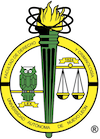Contributions to consolidate the Peruvian letter of digital rights
DOI:
https://doi.org/10.29105/dj3.4-62Keywords:
human rights, Bill of Digital RightsAbstract
This paper articulates the vision of Digital Rights, with the objective and purpose of contributing to the process of co-creation and consolidation of the Peruvian Charter of Digital Rights, within the framework of the goals of the Secretary of Government and Digital Transformation – (Peru-2011) and the Sustainable Development Goals (SDG) led by the MovileWorld Congress (2022) in collaboration with the Secretary of State for Digitization and Artificial Intelligence (Spain). Insofar as Digital Rights are defined "as an extension of the Rights established in the Universal Declaration of Human Rights of the United Nations organization (UN-1948)". Digital Rights that have the purpose of guaranteeing free access to the Internet and Information and Communication Technologies (ICT), to all people, to close the digital divide and promote the correct use of networks as a common good of humanity.
The method. – Regarding the Qualitative Approach – for the production of new knowledge and knowledge – demands the broad and precise understanding and verification of the theory that supports the research problem, where the socio-legal reality unfolds through propositions, mandates and commandments juridical-legal, the argumentation and inductive interpretation is used for the questioning and evaluative analysis of the principles that develop the propositional corpus for the establishment of the holistic truth or the totalizing understanding of the processes and contexts that integrate the projection of Human Rights , Fundamental Rights and Digital Rights of the present and future generations.
Original conclusion. – The projection of the Fourth Wave of Human Rights, allows us to perceive the co-creation and consolidation of Digital Rights that, together with ICT access, characterize the Age of Knowledge, Communications and Artificial Intelligence.
Downloads
References
Arendt, Hanna (1976). La condición humana. Barcelona: SEIX BARRAL.
Arribasplata Cabanillas, I. y Quintana, H. (1995). Educación en Valores, Lima:
Editorial San Marcos.
Caro Coria, D. (1999). Derecho Penal del Ambiente, Delitos y Técnicas de Tipificación, Lima: Gráfica Horizonte S.A.
Carruitero Lecca, F. & Sosa Mesta, H. (2003). Medios de Defensa de los Derechos Humanos en el Sistema Internacional, Modelos, Doctrina. Jurisprudencia y Tratados Internacionales, Lima Jurista Editores EIRL.
Convención Americana sobre Derechos Humanos de San José de Costa Rica. Lima – AFA Editores Importadores S.A.
Coordinadora Nacional de Derechos Humanos. (2005). Derechos Humanos y Gobernabilidad Democrática Local. Lima - Programa Andino de Derechos Humanos.
Comisión Interamericana de Derechos Humanos. (2018). RESOLUCION 1/18 CORRUPCION Y DERECHOS HUMANOS.
https://www.oas.org/es/cidh/decisiones/pdf/resolucion-1-18-es.pdf.
Ezquiaga Ganuzas, F. (2011). Argumentación e Interpretación. La Motivación de las Decisiones Jurídicas en el Derecho Peruano, Lima: Grijley Editores.
Ferrajoli, L. (2001). Los fundamentos de los Derechos Fundamentales. Madrid: TROTTA Editores.
Mesias Ramírez, C. (2018). Los Derechos Fundamentales, Dogmática y Jurisprudencia del Tribunal Constitucional, Lima: Gaceta Jurídica S.A.
Velásquez Monsalve, J.D. (2013). El derecho natural en la Declaración Universal de los Derechos Humanos. Revista FACULTAD DE DERECHO Y CIENCIAS POLÍTICAS. Vol. 43, N°. 119, pp. 735-772.
Downloads
Published
How to Cite
Issue
Section
License
Copyright (c) 2023 Journal of Legal Challenges

This work is licensed under a Creative Commons Attribution-NonCommercial 4.0 International License.
The authors who publish in this journal accept the following conditions:
- Authors will retain their copyright and guarantee the journal the right of first publication of their work, which will be simultaneously subject to the Creative Commons Attribution-NonCommercial 4.0 International License. That allows third parties to share the work as long as its author and its first publication are indicated in this magazine.
- Authors may make other independent and additional contractual agreements for the non-exclusive distribution of the version of the article published in this journal (eg, include it in an institutional repository or publish it in a book) provided that they clearly indicate that the work it was first published in this magazine.
- Authors are allowed and recommended to publish their work on the Internet (for example on institutional or personal pages) after the review and publication process, as it can lead to productive exchanges and a greater and faster dissemination of the published work ( See The effect of open access).







